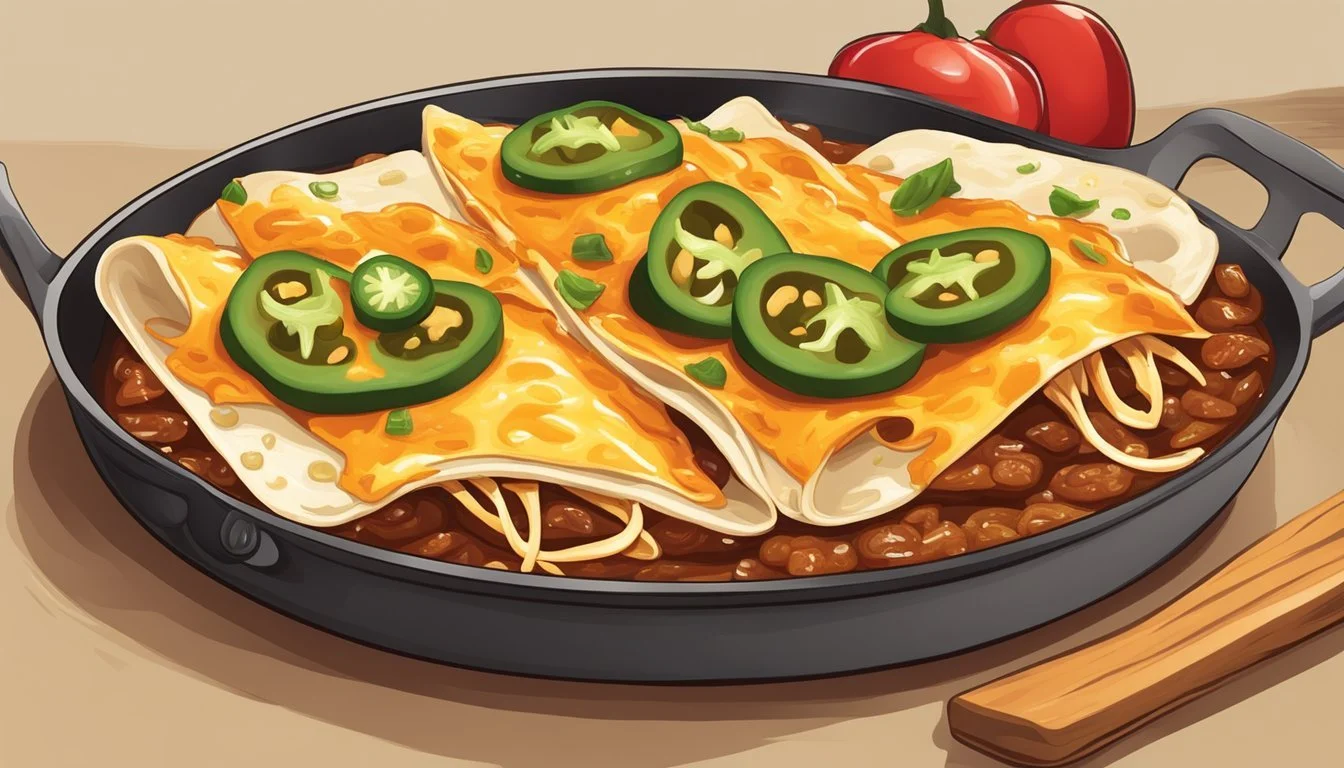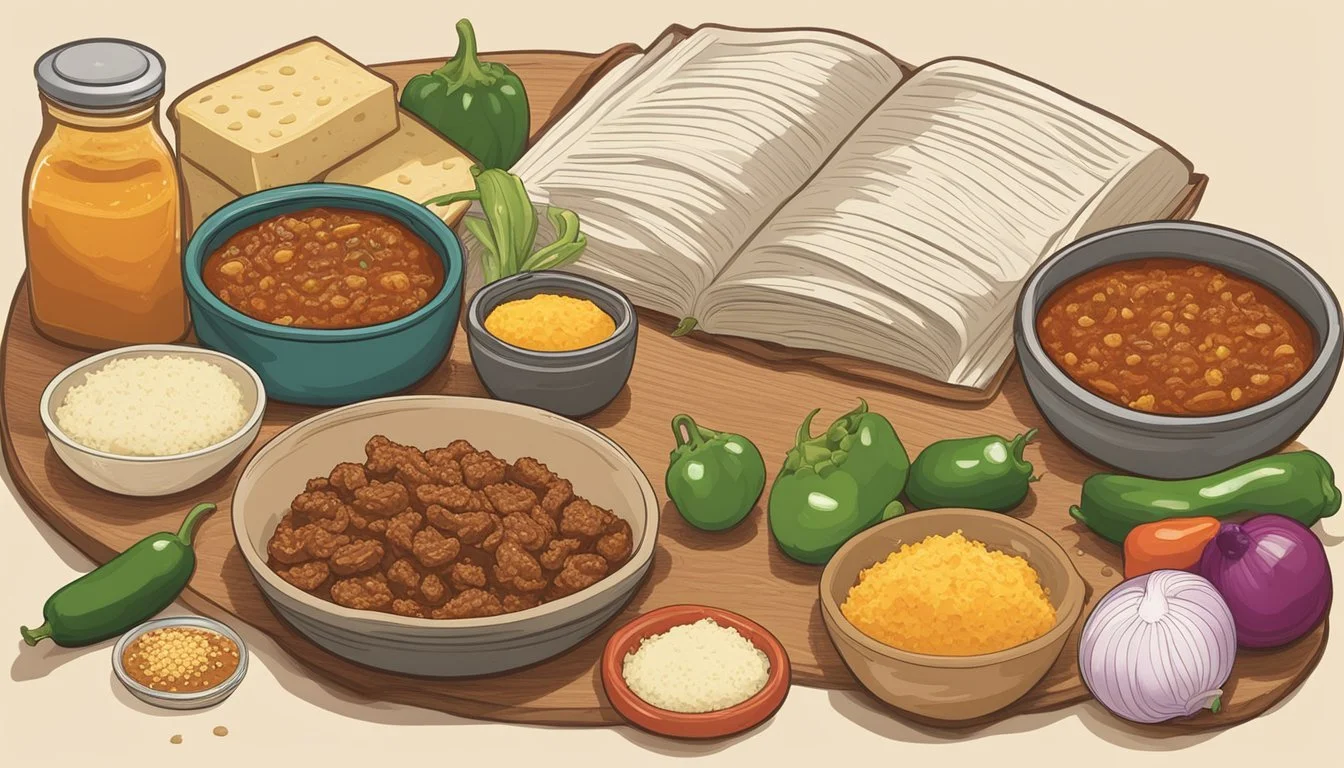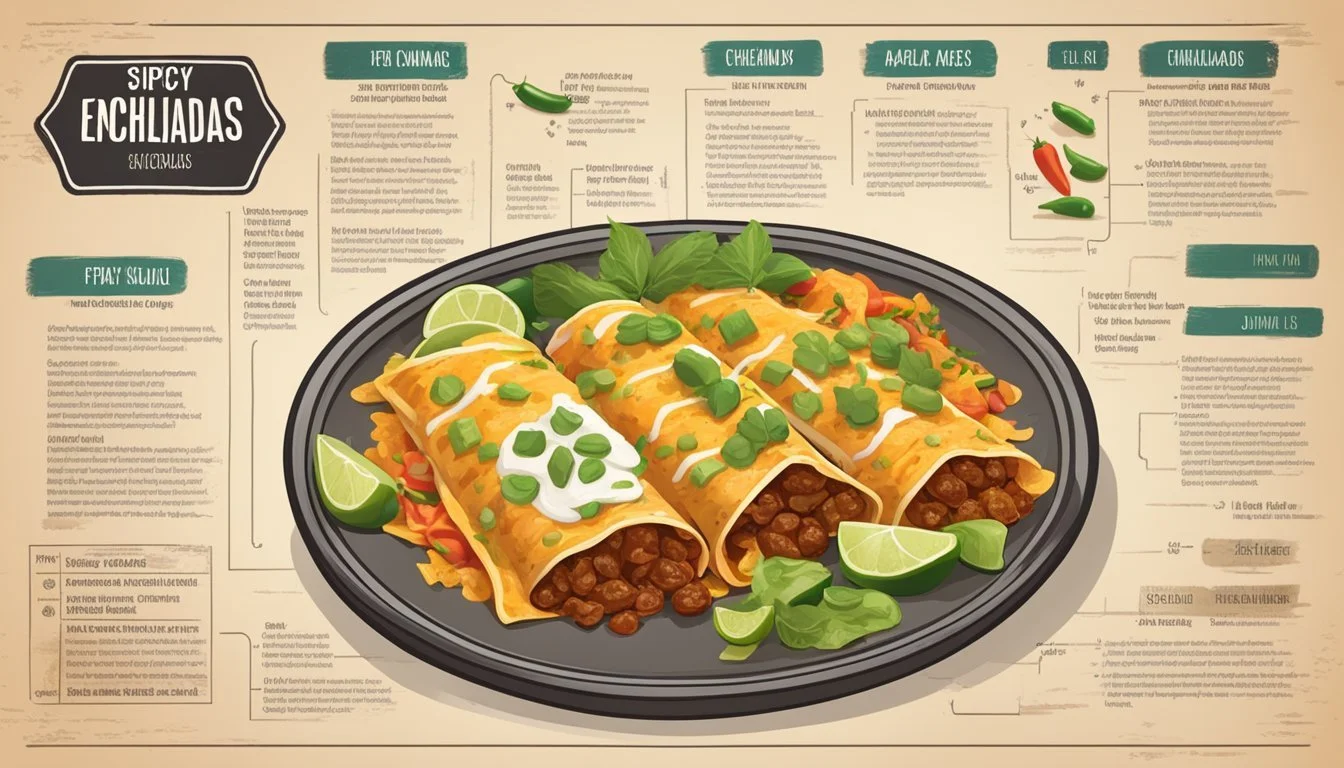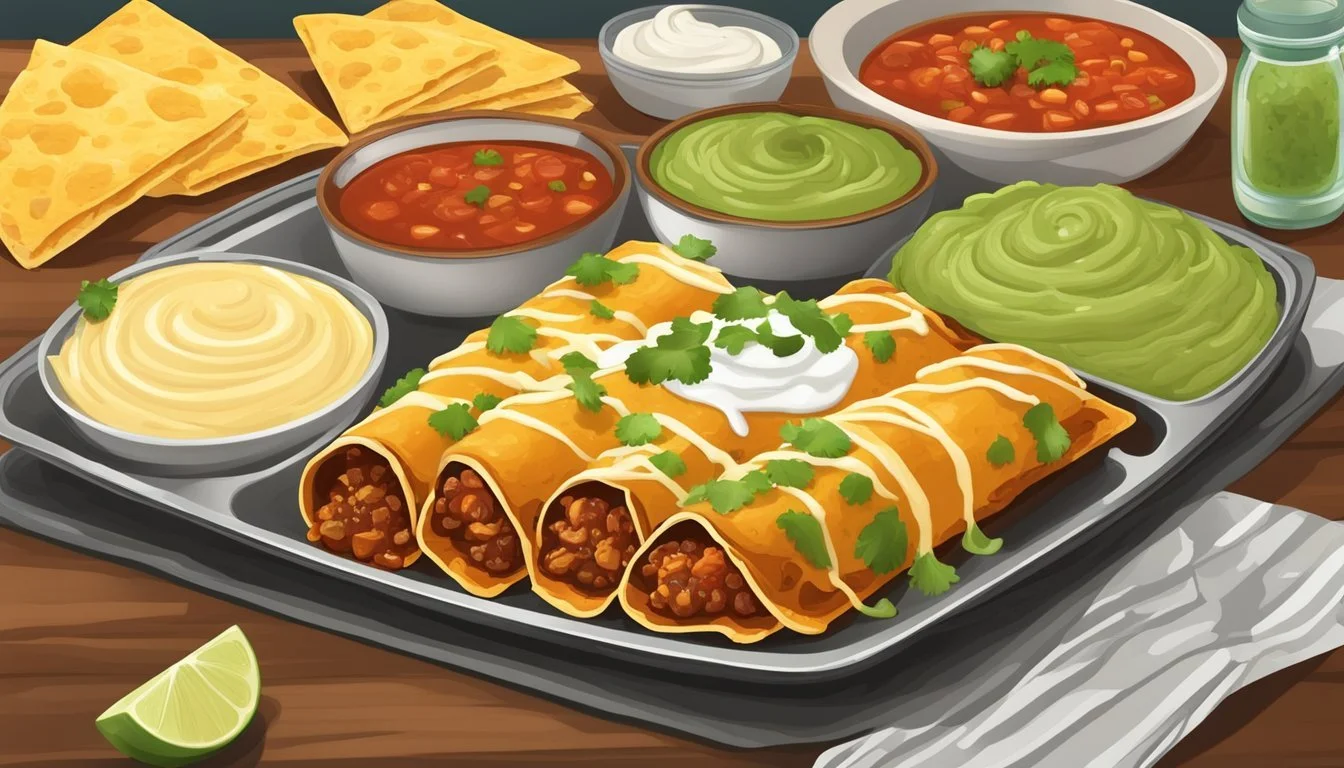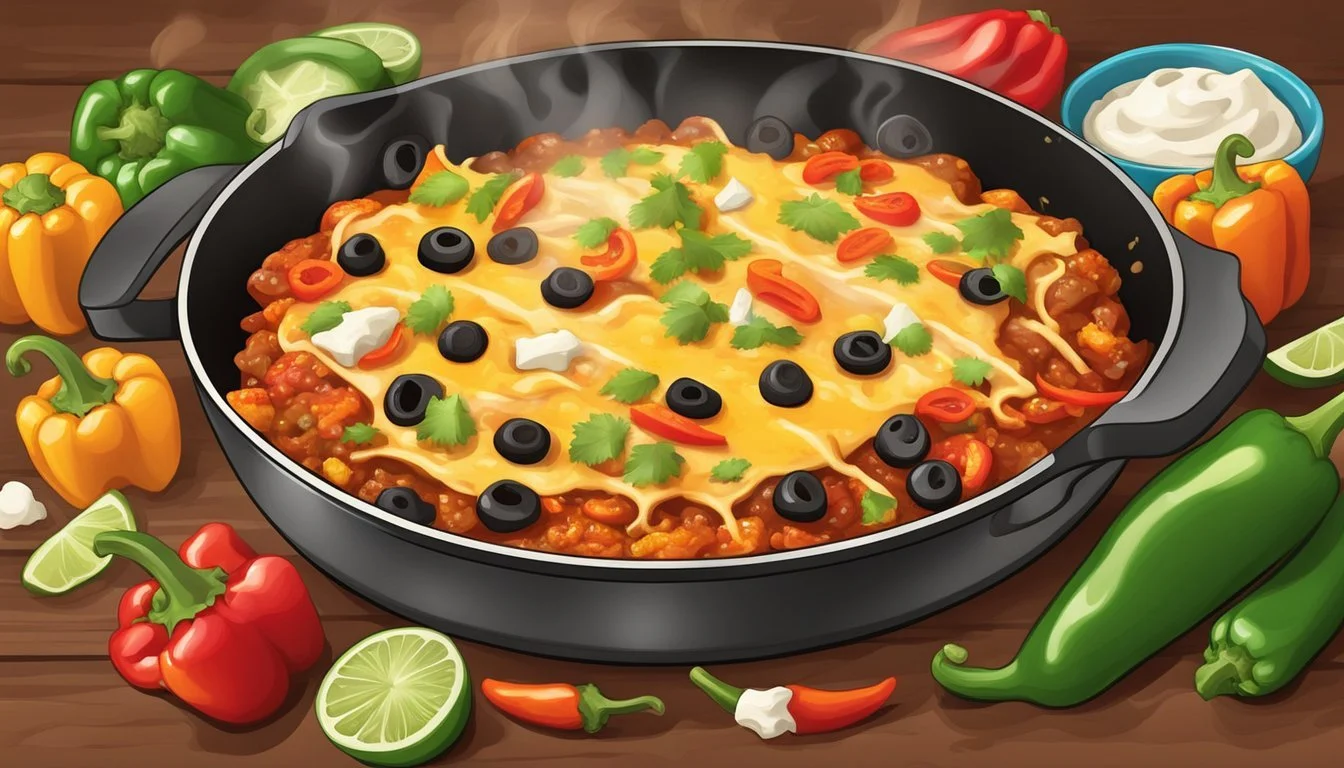The Spiciest Texas Enchilada Recipes
Unleashing Heat on Tex-Mex Classics
Enchiladas have long been a staple in Tex-Mex cuisine, a culinary tradition that blends the flavors of Texas and Mexico to create dishes that are robust, comforting, and often feature a kick of spice. These rolled tortillas, drenched in sauce and packed with a variety of fillings, epitomize the heartiness and zest of Tex-Mex food. For those who crave an extra dose of heat, spicier versions of Texas enchiladas turn up the temperature, incorporating bold chiles and spices to transform a classic dish into a fiery experience.
The key to a great spicy enchilada lies in the combination of elements - the tortillas, sauce, and fillings. A proper spicy Tex-Mex enchilada starts with corn tortillas, soft yet sturdy enough to hold their shape under layers of sauce and cheese. The sauce, often a chili-based gravy, is the spirit of the dish, infused with spices such as cumin and paprika, and intensified with hot peppers like jalapeños or serranos.
To accommodate the varied heat preferences of diners, these recipes offer modifications in spice levels, allowing for a personalized fiery twist on this Tex-Mex favorite. Cooks can experiment with a range of cheeses, from the traditional Monterey Jack to the sharp cheddar, each adding a distinct taste and texture to the dish. Enthusiasts of Mexican food (What wine goes well with Mexican food?) have found that when cheeses melt together with the spicy sauce and tortillas, the result is a flavor-packed meal that is a testament to the bold and innovative spirit of Tex-Mex cuisine.
Historical Context of Tex-Mex Enchiladas
Tex-Mex enchiladas offer a taste of history, blending traditional Mexican ingredients with Texas twists. These enchiladas have evolved from simple maize wraps to a melting pot of flavors that represent a culinary bridge between two cultures.
The Influence of Mexican Cuisine on Tex-Mex
The roots of Tex-Mex can be traced to the native peoples of Mexico, long before European influence brought dairy and wheat to the New World. The staples of their diet included maize, beans, squash, and chilies, forming a solid foundation for what would become Tex-Mex cuisine. As Spanish colonization expanded into what is now Texas, these indigenous ingredients fused with European elements, paving the way for new culinary creations.
Tex-Mex cuisine emerged as a regional adaptation when Texas was part of the Spanish colony referred to as New Spain. Post-1821, when Mexico achieved independence, the culinary traditions of this region continued to meld and diversify. San Antonio became an epicenter for Tex-Mex cuisine, with the enchilada taking center stage as a popular dish.
Evolution of the Enchilada in Texas
The enchilada, a rolled maize tortilla often bathed in chili sauce, began seeing numerous adaptations in Texas. By the early 1920s, restaurants in Texas cities like Houston and San Antonio were serving enchiladas with a variety of meats, cheeses, and chili gravies, reflecting the region's robust and hearty tastes.
As the dish evolved, so too did its ingredients. Corn tortillas, a Mesoamerican legacy, remained a staple, while the introduction of American cheeses added a creamy richness that became synonymous with Tex-Mex enchiladas. These new versions were generously laden with spicy chili sauce, an homage to the Mexican penchant for powerful flavors, satisfying a craving for fiery dishes. Over time, the Tex-Mex enchilada has become emblematic of Texan ingenuity and the blending of multicultural culinary landscapes.
Essential Ingredients for Spicy Texas Enchiladas
To elevate Texas Enchiladas to their spiciest form, certain ingredients are critical. They provide the foundation of flavor and heat that distinguishes this dish.
The Role of Corn Tortillas
Corn tortillas are the traditional choice for enchiladas, providing a sweet base that contrasts with the spicy elements. It's essential to fry them briefly to improve pliability and prevent breaking when rolled.
Varieties of Cheese in Tex-Mex Enchiladas
Cheese is a key component, adding creaminess and balancing out the heat. A blend of sharp cheddar, Monterey Jack, and American cheese is recommended for optimal flavor and melt.
Cheddar Cheese: Offers a sharp tang
Monterey Jack: Balances with a milder taste
American Cheese: Adds creaminess
Choosing the Right Meat: Beef, Chicken, and Beyond
The choice of meat significantly impacts the final dish.
Beef: Ground or shredded, beef adds a robust flavor.
Chicken: Offers a lighter alternative but absorbs the spices well.
Both should be seasoned with a blend of Texas chili powder, cumin, garlic, and oregano for an authentic Texas taste.
Signature Spices and Seasonings
Spices are what make Tex-Mex enchiladas fiery and flavorful. A signature blend includes:
Chili Powder: Adds depth and the quintessential Texas heat.
Cumin: Brings an earthy note.
Garlic Powder: Enhances overall savory notes.
Oregano: Contributes a subtle, herbal touch.
Onion Powder: Offers sweetness and pungency.
Salt and Black Pepper: Essential for balancing and accentuating flavors.
The careful combination of these spices ensures each bite is packed with the hallmark spicy kick Texas enchiladas are known for.
Step-by-Step Recipe Guide
Crafting the perfect spicy Texas enchilada involves a harmonious balance of preparing a robust chili gravy, meticulous assembly, and precise baking techniques. This guide will walk you through each step to help you achieve a fiery and flavorful Tex-Mex classic.
Preparing the Spicy Chili Gravy
To begin, heat 2 tablespoons of vegetable oil or butter in a skillet over medium heat. Once hot, whisk in 2 tablespoons of all-purpose flour to form a roux, allowing the mixture to brown slightly which should take about 1 minute, constantly stirring to prevent burning. Gradually pour in 1 cup of beef broth or chicken broth, stirring vigorously to keep the gravy smooth. Add your choice of chili powder to taste, aiming for a deep red and spicy sauce that clings to a spoon. Let the mixture simmer for 10-15 minutes to develop the flavors and achieve the desired consistency.
Assembly of Enchiladas
For assembly, lightly coat each flour tortilla in the spicy chili gravy to infuse them with flavor. Place a sufficient amount of your preferred filling in the center of each tortilla and roll it up tightly. Arrange the filled tortillas seam side down in a greased baking dish. Ensure the enchiladas are nestled closely to each other, which helps to keep them intact during baking.
Baking Techniques and Tips
Preheat your oven to 375°F (190°C), which strikes the ideal balance between cooking the enchiladas thoroughly and melting the cheese to a perfect bubbly finish. Drench the rolled enchiladas with the remaining spicy chili gravy, making sure it covers them entirely. This not only adds moisture but also ensures that every bite is packed with flavor. To achieve a golden and cheesy top layer, sprinkle a generous amount of cheese over the gravy-coated enchiladas. Bake for 20-25 minutes or until you see the sauce bubbling along the edges of the baking dish and the cheese melted to a delightful golden brown. For best results, let the enchiladas sit for a few minutes after baking; this allows them to set and makes serving easier.
Nutritional Information and Dietary Considerations
When considering the nutritional content and dietary options for spicy Texas enchiladas, it's important to acknowledge the caloric density of traditional ingredients and the availability of alternative options for those with specific dietary needs.
Caloric Overview of Ingredients
Tortillas: A single corn tortilla typically contains about 50 to 70 calories. Given that a single serving of enchiladas can contain two to three tortillas, this fundamental component can contribute around 100-210 calories.
Cheese: High in both calories and fat, cheese is a common filling in Tex-Mex enchiladas. One ounce of cheddar cheese, which is often used, contains approximately 115 calories and 9.5 grams of fat.
Sauce: The enchilada sauce, especially when made spicy with additional chilies, contributes a minor amount but is typically not a significant source of calories.
Toppings: Ingredients like sour cream and guacamole increase the caloric intake, with a tablespoon of sour cream adding roughly 30 calories.
Meat: If meat is added, such as beef or chicken, this can also increase the calorie count significantly.
Gluten-Free and Vegetarian Variations
For those seeking gluten-free options, corn tortillas are a naturally gluten-free base for enchiladas. It's essential to ensure that all other ingredients, such as sauces and seasonings, are also free from gluten.
Vegetarian enchiladas can provide a lower-calorie meal by substituting meat with beans or vegetables, which are lower in calories and fat compared to traditional meat fillings. Cheeses, though high in calories, can still be included in moderation to maintain the dish's richness. Dairy-free cheeses are also available for a vegan adaptation.
Serving and Presentation
The impact of a well-presented spicy Texas enchilada dish lies not only in its bold flavors but also in its visual appeal and complementary sides. An enticing arrangement enhances the dining experience and balances the heat of the recipe.
Garnishing with Fresh Toppings
To accentuate the fiery nature of the enchiladas and add a layer of freshness, chefs garnish the dish right before serving. A sprinkle of finely chopped cilantro offers an herbaceous note, while dollops of sour cream or drizzles of crema can temper the spice. Slices of avocado or a scoop of guacamole provide a creamy counterbalance, and pico de gallo introduces a refreshing, tangy component to the mix. For those who revel in heat, finely diced raw onions or even a splash of extra hot tomato sauce could be an option.
Topping Description Cilantro Adds a fresh, sharp taste and vibrant color. Sour Cream Offers a cooling contrast to the spicy enchiladas. Avocado Provides a smooth, rich texture. Pico de Gallo Introduces a fresh, zesty flavor. Onion Delivers a sharp, pungent accent.
Pairing with Sides for a Complete Meal
Complementing spicy Texas enchiladas with the right sides ensures a balanced and satisfying meal. Classical pairings include Mexican rice, with its fluffy grains steeped in a tomato-based sauce, and refried beans, adding a creamy, hearty element that offsets the intenseness of the enchiladas. Both sides should be served hot, and potentially garnished with a sprinkle of shredded cheese which can melt into them, providing a pleasing visual and textural contrast to the central dish.
Side Function Mexican Rice Balances spice with mild, tomato-infused flavor. Refried Beans Adds heartiness and richness to the meal.
Incorporating these garnishes and sides not only provides a variety of textures and flavors but also creates a visually appealing plate that tempts the palate and satisfies the appetite.
The Business of Enchiladas
Enchiladas, a staple of Tex-Mex cuisine, play a significant role both in restaurant menus and as consumer packaged goods. They embody a fusion of traditional Mexican recipes and Texas flavors, especially when the spiciest versions are considered.
Tex-Mex in the Restaurant Industry
The Tex-Mex sector within the restaurant industry thrives on containing a multitude of Mexican-inspired dishes, with enchiladas being one of the main attractions. They often come smothered in a variety of sauces, with cheese enchiladas frequently favored for their rich, gooey texture. Notably, restaurants often use their spiciest enchilada recipes as a means to stand out from the competition, creating signature dishes that entice customers to return.
Menu featuring:
Traditional Cheese Enchiladas
Specialty Spiced Enchiladas
Restaurants also adapt their enchilada offerings to accommodate varying taste preferences, ensuring they cater to a wider audience.
Packaging and Selling Enchilada Products
In the retail segment, enchilada products are packaged and sold in various forms, from ready-to-eat meals to make-at-home kits. Brands that successfully capture the authentic taste of restaurant-quality dishes in convenient, shelf-stable or frozen products tend to dominate this market niche.
Product Types:
Frozen enchilada meals
Enchilada sauces and seasoning mixes
Meal kits with all necessary ingredients
Packaging often includes clearly labeled spiciness levels, catering to consumers seeking everything from mild to extra hot flavor profiles. The business model hinges on balancing the integrity of traditional Tex-Mex cheese enchiladas with the practicalities of mass production and distribution.
Additional Tips and Tricks
To elevate the fiery Texas enchilada recipes, one should consider not only the preparation but also the art of innovation. Here are practical tips for making enchiladas in advance and putting a creative twist on the classic.
Making Enchiladas in Advance
Prep time is essential when creating the perfect spicy enchilada. To save time, one can assemble enchiladas a day ahead, covering the casserole dish or baking pan with foil and refrigerating it overnight. Before cooking, allow the dish to sit at room temperature for 30 minutes to ensure even baking. Cook time can vary based on the oven and enchilada type, but it generally ranges from 20 to 25 minutes at 350°F. As for total time, factoring in preparation and cook time, one should allocate at least an hour to ensure quality.
For enchiladas that retain their shape and don't turn soggy, some chefs recommend lightly frying white corn tortillas in lard or oil beforehand. This step creates a barrier that keeps the tortillas from absorbing too much sauce. When rolling tortillas, they should be filled and rolled firmly to fit snugly in the dish, maximizing the servings per pan without wasting space.
Creative Variations on the Classic Enchilada
Enchiladas lend themselves to creativity, both in terms of ingredients and preparation. For those who enjoy a creamy texture, adding chunks of Velveeta cheese to the filling before rolling can provide a rich, gooey center to the spicy dish. Alternatively, using Velveeta in the sauce can add a smooth, velvety consistency that complements the heat.
Another variation involves the layering technique, where tortillas are layered rather than rolled, creating a Tex-Mex lasagna-style dish that can be cut into neat squares. This method may alter both prep time and cook time, but it simplifies assembly, which is especially helpful when serving a large crowd.
By keeping an eye on these tips and allowing oneself to experiment with the ingredients and techniques, one can transform the classic Texas enchilada into a personalized culinary experience.
Frequently Asked Questions (FAQ)
What ingredients are needed for spicy Texas enchiladas? Spicy Texas enchiladas typically require corn tortillas, a protein such as beef or chicken (though vegetarian options can use beans), grated yellow cheese, chili powder or fresh chilies for the heat, onions, garlic, and a chili sauce or gravy.
How much does it cost to make Texas enchiladas at home? The cost varies based on local ingredient prices and the chosen recipe complexity, but one can typically expect to spend between $10-$20 for a dish serving four to six people.
What type of equipment is necessary for making enchiladas? Essential equipment includes a baking dish, a skillet or pan for heating tortillas, a saucepan for the chili gravy, and typical kitchen utensils like knives, spatulas, and measuring cups.
Are oil-fried tortillas necessary for enchiladas? While traditional recipes may call for briefly frying corn tortillas in oil to improve pliability, one can also warm them in the oven or on a skillet to achieve a similar effect without frying.
How is queso dip incorporated into enchiladas? Queso dip isn't a traditional enchilada ingredient, but enthusiasts may choose to drizzle it on top of the enchiladas before serving for added creaminess and flavor.
Where can I find a good spicy Texas enchilada recipe? Many recipes are available online and in cookbooks specializing in Tex-Mex cuisine. Be sure to find one with a high heat level if seeking a fiery twist.
Ingredients: Look for chili powder, fresh chilies, garlic, onions, and sharp yellow cheese.
Cost: Expect a cost range of $10-$20.
Equipment: Use a baking dish, skillet, and saucepan.
Preparation: Opt for warming tortillas instead of frying if desired.
Queso Dip: Drizzle on top of the finished dish for extra flavor.

